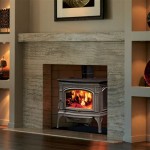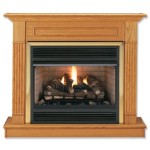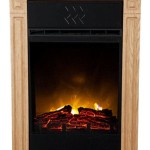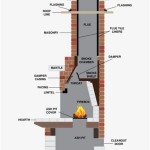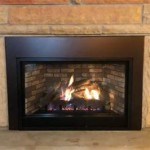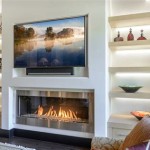Understanding Gas Fireplace Control Valves
A gas fireplace provides warmth and ambiance to a home, often serving as a focal point in living spaces. The safe and efficient operation of a gas fireplace relies heavily on a single, critical component: the gas control valve. This valve regulates the flow of natural gas or propane to the fireplace burner, ensuring controlled ignition, consistent flame, and a secure shut-off when needed. Understanding the function, types, troubleshooting, and maintenance of gas fireplace control valves is essential for homeowners, installers, and service technicians alike.
The gas control valve is a sophisticated device that integrates multiple functions within a relatively small footprint. It not only acts as a gatekeeper for the gas supply but also incorporates safety features like a thermocouple or thermopile sensor and a safety shut-off mechanism. These safety measures are designed to prevent gas leaks and explosions, making the control valve a crucial element in the overall safety system of the fireplace.
The valve's operation is typically controlled by a knob, switch, or remote control, allowing users to adjust the flame height and heat output. Some modern gas fireplaces incorporate electronic ignition systems and programmable thermostats, further enhancing user convenience and energy efficiency. These advanced systems rely on sophisticated control valves with integrated electronic components.
Key Functions of a Gas Fireplace Control Valve
The gas fireplace control valve performs several vital functions to ensure the safe and efficient operation of the appliance. These functions can be broken down into primary responsibilities that govern its design and operation.
Regulating Gas Flow: The primary function of the gas control valve is to regulate the flow of gas to the burner. This regulation is achieved through a series of internal valves and orifices that are precisely calibrated to deliver the correct amount of gas for different flame settings. The valve typically allows for incremental adjustments in gas flow, enabling the user to control the flame height and heat output of the fireplace. The precision of this regulation is crucial for maintaining a consistent and visually appealing flame while optimizing fuel efficiency.
Safety Shut-Off: A critical safety feature of the gas control valve is its ability to automatically shut off the gas supply in the event of a pilot light failure or other malfunction. This shut-off mechanism is typically triggered by a thermocouple or thermopile sensor that monitors the pilot light flame. If the pilot light is extinguished, the sensor cools down, signaling the valve to close and prevent the release of unburnt gas into the home. This feature is essential for preventing gas leaks and potential explosions.
Ignition Control: The gas control valve also plays a role in the ignition process. In models with a standing pilot light, the valve allows a small flow of gas to the pilot burner, which is then ignited by a spark or manually with a match or lighter. In models with electronic ignition, the valve controls the flow of gas to the main burner and simultaneously triggers an electronic spark to ignite the gas. The valve ensures that the gas is only released when the ignition source is active, preventing the accumulation of unburnt gas.
Types of Gas Fireplace Control Valves
Several types of gas fireplace control valves are available, each designed for specific applications and offering varying levels of functionality. The choice of valve depends on the type of fireplace, the desired level of control, and the safety features required.
Millivolt Valves: Millivolt valves are commonly used in older gas fireplaces and are characterized by their reliance on a thermocouple or thermopile to generate a small electrical current (millivolts). This current powers the valve's internal solenoid, which opens to allow gas flow to the main burner. Millivolt valves are relatively simple and reliable, but they typically require a standing pilot light and offer limited control options. They are also more susceptible to issues with thermocouple degradation over time.
Electronic Ignition Valves: Electronic ignition valves are used in newer gas fireplaces and offer several advantages over millivolt valves. These valves use an electronic control module to ignite the gas and monitor the flame. They eliminate the need for a standing pilot light, saving energy and reducing the risk of pilot light outages. Electronic ignition valves often incorporate advanced features such as remote control operation, programmable thermostats, and flame modulation.
Standing Pilot Valves: These valves are used in fireplaces that maintain a constantly burning pilot light. They are simpler in design compared to electronic ignition valves, typically relying on a thermocouple to sense the pilot flame and keep the main gas valve open. While reliable, standing pilot valves consume more gas over time due to the continuous pilot operation.
Direct Vent Valves: These valves are specifically designed for direct vent fireplaces, which draw combustion air from outside the home and vent exhaust gases directly to the outside. Direct vent valves often incorporate additional safety features to ensure proper combustion and prevent the release of harmful gases into the home. They are typically more complex than valves used in traditional fireplaces.
Troubleshooting Gas Fireplace Control Valves
A malfunctioning gas fireplace control valve can lead to a variety of problems, including pilot light issues, flame instability, and complete failure of the fireplace. Diagnosing and troubleshooting these problems requires a systematic approach and a basic understanding of the valve's operation.
Pilot Light Problems: One of the most common issues with gas fireplace control valves is a pilot light that won't stay lit. This problem can be caused by a variety of factors, including a dirty pilot burner, a faulty thermocouple or thermopile, or a blocked gas line. To troubleshoot this issue, first, ensure that the gas supply is turned on and that the gas line is free from obstructions. Next, inspect the pilot burner for dirt or debris and clean it with a small brush or compressed air. If the pilot light still won't stay lit, replace the thermocouple or thermopile.
Flame Instability: Another common problem is a flame that is unstable or flickers excessively. This can be caused by a number of factors, including a dirty burner, low gas pressure, or a malfunctioning gas control valve. To troubleshoot this issue, first, inspect the burner for dirt or debris and clean it with a small brush or compressed air. Next, check the gas pressure to ensure that it is within the recommended range. If the flame is still unstable, the gas control valve may be faulty and need to be replaced.
Complete Failure: In some cases, the gas fireplace may fail to ignite at all. This can be caused by a faulty gas control valve, a blocked gas line, or a problem with the ignition system. To troubleshoot this issue, first, ensure that the gas supply is turned on and that the gas line is free from obstructions. Next, check the ignition system to ensure that it is functioning properly. If the fireplace still won't ignite, the gas control valve may be faulty and need to be replaced. Before replacing the valve, ensure power is supplied to the unit (if applicable) and that all safety interlocks are functioning correctly.
Safety Precautions: When working with gas appliances, it is essential to take appropriate safety precautions. Always turn off the gas supply before attempting any repairs. If you are not comfortable working with gas appliances, consult a qualified technician. Never attempt to bypass any safety features of the gas control valve.
Regular maintenance, including cleaning the burner and inspecting the pilot light, can help prevent problems with the gas fireplace control valve. If you suspect that the valve is faulty, it is best to have it inspected by a qualified technician. Replacing a gas control valve is a complex task that should only be performed by a trained professional.
Understanding the gas fireplace control valve's function, types, and troubleshooting steps can empower homeowners to maintain their appliances and ensure safe operation. While some minor issues can be addressed with basic troubleshooting, complex repairs should always be entrusted to qualified technicians who possess the specialized knowledge and tools necessary to handle gas appliances safely and effectively. A properly functioning gas fireplace control valve is paramount for the comfort, safety, and efficiency of any gas fireplace system.

How To Test Your Main Control Valve Www Mygasfireplacerepair Com

Gm970a Gas Valve 3

Sit 820 Series Millivolt Fireplace Valve 30 Turndown Natural Gas Fire Parts Com

Gm970a Gas Valve 3

How To Test Your Main Control Valve Www Mygasfireplacerepair Com

Gm970b Gas Valve 2

Control Valves Fire Parts Com

China Gas Control Valve For Fireplace Manufacturer And Exporter Wanbao

098522 28 Sit 630 Eurosit Series Gas Control Valve
My Gas Fireplace Pilot Light Works Perfectly However When I Flip The Switch For Rest Of To Turn On Nothing Happens What Quora

